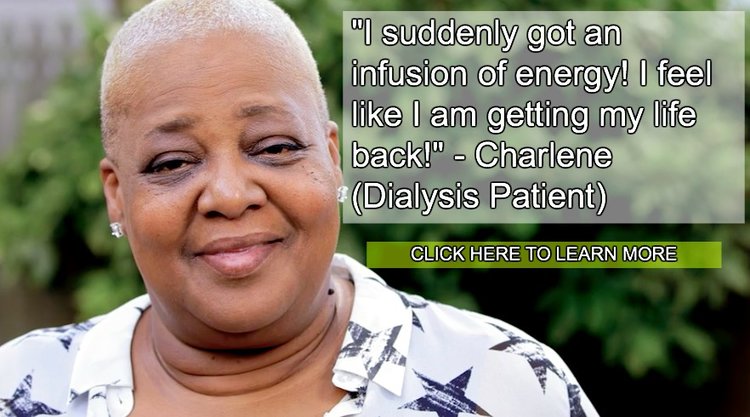© ALL CREDIT TO THEIR RESPECTIVE OWNERS.
Most Chronic Kidney Disease and Dialysis patients realize that they must monitor their phosphorus, but many do not recognize that phosphorus levels above 5.5 serve as a tipping point and are a "very serious problem," according to the Largest Dialysis Organization in America, Fresenius Medical Care. Once Dialysis patients' phosphorus levels tick toward and move past 5.5 they experience severe itching, brittle bones, painful sores that may not heal, veins and arteries that are stiffened or less flexible (making Kidney Transplant more difficult or even impossible), and an increased risk of heart attack or stroke. Most importantly, said Fresenius Medical Care, "High phosphorus can kill!" Try utilizing the following tips to limit your phosphorus from creeping up above the 5.5 limit:
1.) Avoid These High Phosphorus Foods: Chronic Kidney Disease and Dialysis patients should try to avoid high phosphorus foods such as milk (1/2 cup = 120 mg), ice cream (1/2 cup = 70 mg), raisin bran (1 cup = 200 mg), peanut butter (2 tablespoons = 120 mg), chocolate candy (1 ounce = 60 mg), instant pudding (1/2 cup = 340 mg), cola or Dr Pepper (12 ounces = 45 mg), and biscuits (1 medium = 202 mg).
2.) Enjoy These Low Phosphorus Foods Instead: Just because Chronic Kidney Disease and Dialysis patients should attempt to avoid foods with higher amounts of phosphorus, it does not mean that they must feel limited and cannot enjoy quality alternatives. Try substitutes such as rice milk or unenriched soy milk (1/2 cup = 30-60 mg), sherbet or Italian Ice (1/2 cup = 0-30 mg), Rice Krispies (1 cup = 28 mg), cream cheese (2 tablespoons = 20 mg), Sweetarts (1 ounce = 0 mg), Jello (1/2 cup = 10 mg), 7UP or Sierra Mist (12 ounces = 0 mg), and French rolls (1 medium = 36 mg).
3.) Choose Your Bread Wisely: Whether you are enjoying it with eggs for breakfast, for a sandwich as lunch, or a roll for dinner, bread is a lynchpin (important part) in most Chronic Kidney Disease and Dialysis patients' diets. While many may attempt to go with the seemingly healthier wheat, whole grain or rye bread options - this is, in fact, a bad choice for patients since those types of bread typically have higher levels of both phosphorus and potassium. Try these bread options instead: Bagel (cinnamon raisin, blueberry, plain or onion), Corn tortilla (6-inch), English muffin, Flat bread, Flour tortillas (made without baking powder), French/Italian bread or rolls, Pita bread (white), Sourdough bread, and White bread.
4.) Know What High Phosphorus Means On Food Labels: Food labels are often overwhelming for consumers in general, and especially Dialysis patients who often have a lot on their minds and do not have much time to decipher (interpret) food labels. Although many nutrients are listed on the nutrition labels of the foods you buy, it’s not required by law for phosphorus to be listed. Therefore, it’s rarely included on the label. Some foods, such as cereals, list the percent Daily Value for phosphorus. If milligrams or percent Daily Value are listed then you should know that Low phosphorus is 0-50 mg or less than 5 percent Daily Value, Medium phosphorus is 51-150 mg or 5-15 percent Daily Value, and High phosphorus is 150 mg or higher or greater than15 percent Daily Value. If phosphorus is not clearly listed, then try to avoid foods with high amounts of phosphoric acid, sodium aluminum phosphate, pyrophosphate, polyphosphates and calcium phosphate. Remember to also check for phosphorus on the labels on medicines and supplements.
5.) Take Your Phosphorus Binders: Many patients skip their binders, forget them at home when eating out, or do not take them regularly at all. Taking phosphorus binders as recommended by your Healthcare Team can go a long way to keep your phosphorus below 5.5 and within a safe range. Tuck a few binders in your car or in your purse so you don't accidentally forget them at home should you grab a bit to eat while out with your family or friends.
Recommended Reading: Can "Too Many" Phosphorus Binders be Harmful to Chronic Kidney Disease Patients?
How do you manage your phosphorus levels? Share your experience and insights with the over 52,000 Friends who have liked KidneyBuzz.com on Facebook (click here). Also, follow the over 125,000+ monthly individual viewers who visit KidneyBuzz.com regularly for the latest daily news and information which teach those with Chronic Kidney Disease, Dialysis, Kidney Transplant, Diabetes, and Hypertension how to better manage and improve their lives. Erica Ashley Jenkins (Dialysis Nurse) said, "Hello I just wanted to let you know I work in a dialysis clinic and over half of our clinic reads this page, we enjoy everything you put on and love to have new information. My patients are a very grateful."






